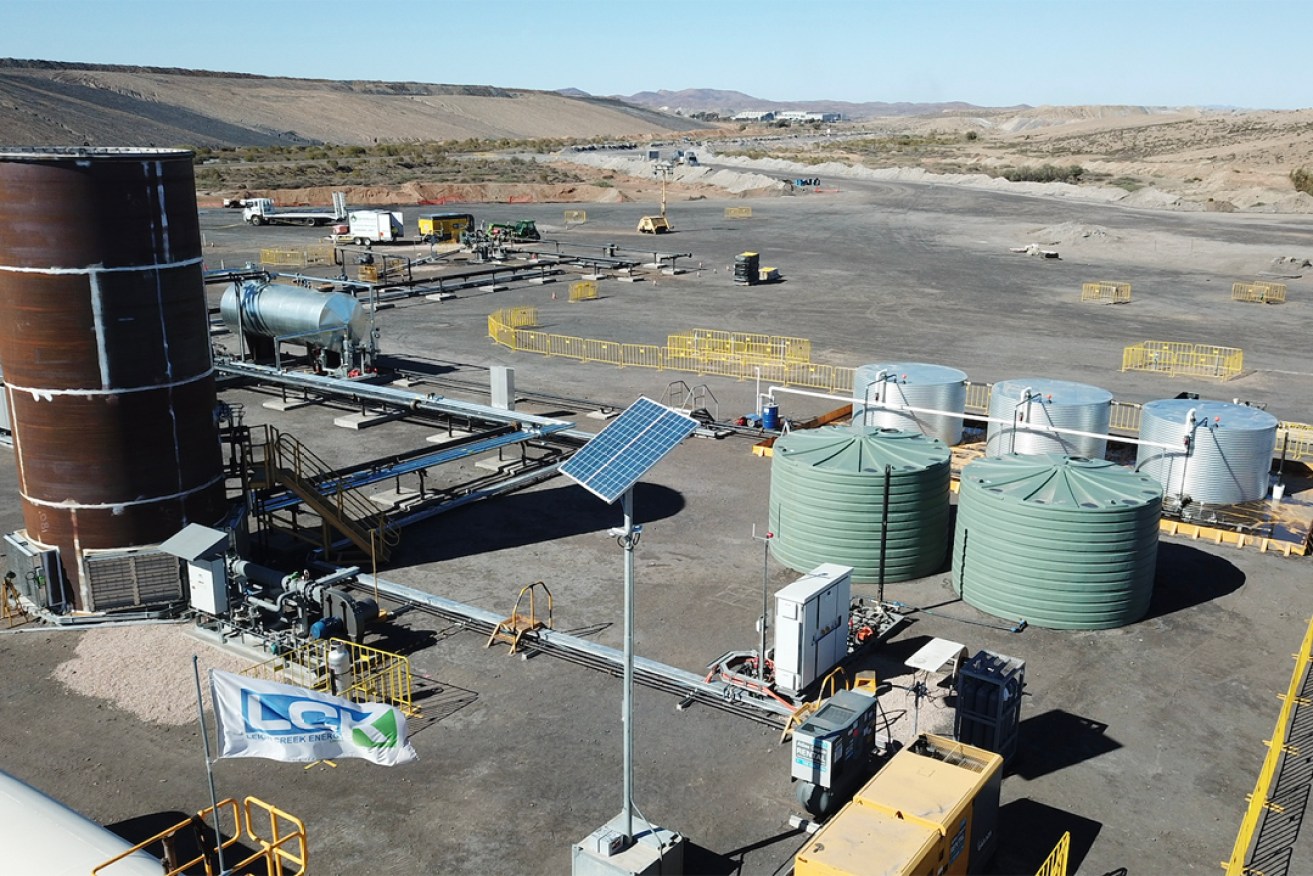Leigh Creek syngas project granted petroleum licence
South Australian company Leigh Creek Energy has been granted a petroleum production licence to commence commercial syngas production at the former coal mine site in the state’s far north.


The publicly-listed company plans to use the gas to produce an initial one million tonnes of nitrogen-based fertiliser a year to supply Australian agriculture.
The State Government licence follows a pre-feasibility study by the company published this month showing a total capital cost of the project to be about $2.6 billion.
The project has projected revenues of about $26.5 billion and costs of $8.1 billion over the 30-year commercial life of the project.
In a statement to the Australian Securities Exchange this morning, Leigh Creek Energy managing director Phil Staveley said the granting of the PPL was the final step in the petroleum licencing approval process for upstream development of the Leigh Creek Energy Project (LCEP), which would be a key supplier of urea to Australia’s agriculture sector.
“The project will be the only fully-integrated urea production facility in Australia, with an on-site power plant with up to 100MW capacity and nameplate one million tonne per annum urea plant, with potential to increase to two million tonnes per annum,” he said.
“The granting of the PPL by the South Australian Government allows us to proceed with certainty towards monetising the large gas reserves of the LCEP and providing long-term economic development opportunities to communities of the Upper Spencer Gulf, northern Flinders Ranges, South Australia and Australia.
“We recently completed the in-situ gasification (ISG) and urea production Pre-Feasibility Study and are well advanced with the upstream operation Environmental Impact Report process for the ISG project.
“These milestones all move LCK closer to becoming a significant supplier of low-cost, domestically-produced urea providing additional security to a critical product for the Australian agricultural sector.”
However, Greens MLC Mark Parnell said it was a flawed project and a technology that had caused massive pollution interstate.
“It’s more than disappointing – it’s actually irresponsible for the State Government to be licensing such an inherently dangerous project that not only poses risks to the environment but, however they spin it, it’s a fossil fuel project that exacerbates climate change.
“We’ll have a look at the detail and it may well be that even if they’ve got their state approvals that there might be further avenues that people can explore.
“There’s also the question of whether they can attract investors for something that’s inherently risky and might just end up losing money.“
The company said in its pre-feasibility study published at the start of this month that half of the capital costs would be debt-funded.
It found that at an annual urea plant capacity of one million tonnes would have a nominal production cost of $109 per tonne, which the company says compares favourably with volume-weighted average global urea production cost of $268 per tonne.
The PFS also found that the syngas produced could be used for power generation, domestic synthetic natural gas production and the production of commercial hydrogen.
However, it identified urea production as the preferred downstream option for the syngas.
The company says the fertiliser plan is disruptive because Leigh Creek Energy would be one of the first companies in the world to use its own in-situ gasification to produce urea, which would allow it to be done far more cheaply and efficiently than its competitors who bought gas at market rates to manufacture fertiliser.
The project is located near the former coal-mining town, 550 kilometres north of Adelaide.
When operational, the LCEP will become the largest in-situ gasification (ISG) project in Australia and a significant supplier of low cost, domestically produced urea to Australia’s agricultural sector.
The company holds two permits over the now-closed Leigh Creek coalfield. The site has gas reserves of 1153 petajoules (PJ) plus indicated and inferred coal resources of 301.2Mt.
One of the two permit sites includes 654 PJ of gas reserves, which the company says is sufficient to supply the proposed 1Mtpa urea production facility for 20 years.
The balance of the 2P reserve is outside the Petroleum Production Licence area but within LCK’s existing petroleum tenements at Leigh Creek.
As the project progresses, the company says the 2P reserve will be developed pursuant to the first stage field development plan and the remaining reserves will be subject to subsequent field development during the project’s life.
The Leigh Creek coal fields originally supplied coal to the Port Augusta power station via a dedicated 260km train line.
Leigh Creek Energy listed on the ASX in 2015 and has spent the past four years obtaining licences. Last year it established a pre-commercial demonstration (PCD) plant to produce a combination of hydrogen, nitrogen, CO2 and methane, known as syngas.
Earlier this year, industrial engineering group Thyssenkrupp was contracted to complete some modelling work for Leigh Creek Energy and found it could produce 200 million kilograms of hydrogen a year at a cost of less than $1 per kilo.
Leigh Creek Energy’s major shareholder is China New Energy, a subsidiary of Shanghai-listed Shaanxi Meijin, which is already active in the Chinese hydrogen economy. Shaanxi Meijin builds hydrogen vehicles, hydrogen fuel cells and hydrogen charging stations in China.
The company’s share price started the month at $0.11 and grew to $0.18 at today’s open before falling slightly to be $0.17 at noon.




